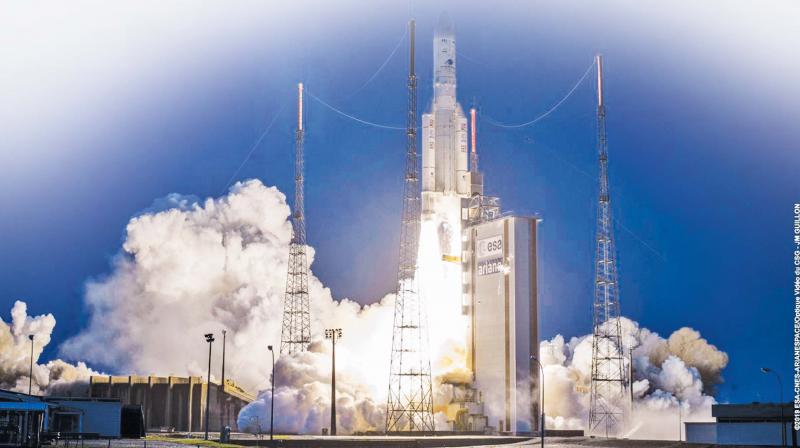India's latest communication satellite GSAT-31 launched successfully

Chennai: India’s latest communication satellite GSAT-31, a replacement for INSAT-4CR satellite, was successfully launched from French Guiana during the early hours of Wednesday.
The Ariane-5 rocket lifted off with GSAT-31 and other two satellites at 2.31 am from Kourou launch base. After a 42-minute flight, GSAT-31 was separated and placed in an elliptical orbit, Isro said in a release.
With a mission life of 15 years, GSAT-31 will be used for supporting VSAT networks for ATM, stock exchange, television uplinks, digital satellite news gathering and DTH television services.
The satellite is 40th communication satellite of India and it would replace INSAT-4CR which is nearing the end of its life.

“GSAT-31 has a unique configuration of providing flexible frequency segments and coverage. It will provide communication services to Indian mainland and islands,” Isro chairman K. Sivan said.
The 2,536 kg satellite will augment the Ku-band transponder capacity in geostationary orbit, the space agency said.
Although the Indian Space Research Organisation has already achieved the capacity of launching satellites that weigh over 3,500 kg, the space agency opted for Arianespace for this emergency launch.
“We have opted for Ariane-5 rocket, as our GSLV rockets were already planned to take off major missions including Chandrayaan-2. Since the INSAT-4CR is dying, we don't want our communication services to get affected due to the delay in the launch,” Isro officials said.
Arianespace will also launch GSAT-30 to replace another INSAT satellite which is nearing its end, they added.
After the separation, the two solar arrays of GSAT-31 were automatically deployed in quick succession and Isro’s Master Control Facility at Hassan in Karnataka took over the command and control of the satellite.
In the coming days, scientists will undertake phase-wise orbit-raising manoeuvres to place the satellite in a circular orbit (36,000 km above the equator) using it’s on the board propulsion system.
The satellite will be operational after the successful completion of all in-orbit tests.

